
SICA Tech Talk with Master Cinematographer Rathinavelu ISC :BME
Dec 17 2023
Master Cinematographer Rathinavelu ISC Unleashes Technical Wizardry in SICA Talk Hour
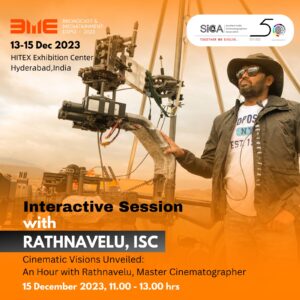
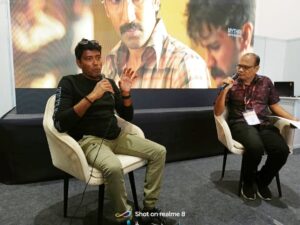
The third day of the BME Hyderabad saw SICA ignite the flames of cinematic innovation with a talk hour hosted by author-cinematographer CJ Rajkumar, featuring the acclaimed cinematographer Rathinavelu. This wasn’t just a conversation; it was a masterclass in technical ingenuity, pushing the boundaries of what’s possible on screen.
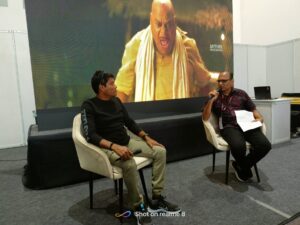
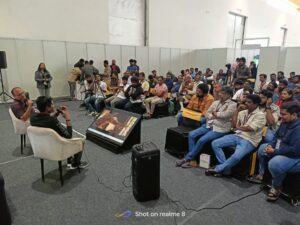

Rathinavelu, a true cinematic alchemist, captivated the audience with his insights on bending technology to his will. He revealed how he dared to use “dry for wet” techniques for underwater sequences, conjuring up aquatic magic without a drop of real water. His masterful use of light and shadow, exemplified by his work in the Telugu film “1 Nenokkadine,” proved that sometimes, less is truly more.
Rathinavelu usage of Tons of Lights in the set brought Telugu film technicians to watch the filming was compared to Legendary V.K.Murthy’s shooting experience of Kaagaz ke phool song in the studio where a shaft of light beaming filming many Cinematographers visited to watch the impossible by host CJ Rajkumar
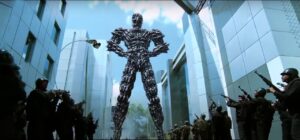
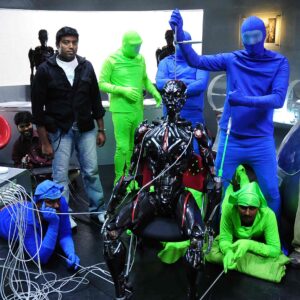
But Rathinavelu’s brilliance extends beyond the frame. He delved into the intricate world of visual effects, detailing the meticulously designed workflow for “Robot,” a film featuring a staggering 2000 CG shots and 3600 lighting diagrams. His dedication to historical accuracy was evident in his use of gaslight for the period drama “Syera Narasimha Reddy,” while his ability to create distinct visual palettes, like the dirty green of “Sethu,” showcased his versatility.

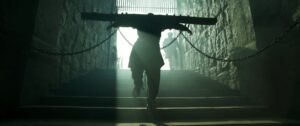
Perhaps the most mind-blowing revelation was Rathinavelu’s pioneering spirit. In 2008, before the age of LEDs, he embraced “intelligent lighting” using DMX, a testament to his constant pursuit of innovation.
*Beyond the Ordinary: Rathinavelu’s Technical Feats*
Rathinavelu’s talk wasn’t just about technical prowess; it was about pushing the boundaries of cinematic storytelling. He shared fascinating anecdotes about:
*Transforming dry grass into a sprawling landscape for “Rangasthalam”:* His innovative use of dry grass created a unique and evocative warm color tone that became an instant reference point for digital color grading.
*Pioneering the use of cinema cameras in gimbals:* “Rangasthalam” was the first film to extensively utilize cinema cameras in gimbals, resulting in stunningly smooth and dynamic camerawork.
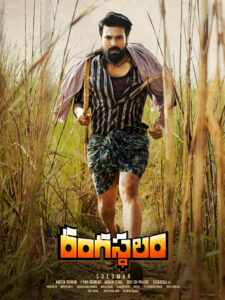
These are just a few examples of Rathinavelu’s boundless creativity and technical expertise. His talk served as an inspiration to aspiring and seasoned cinematographers alike, urging them to embrace experimentation, challenge conventions, and never stop chasing the magic of visual storytelling.
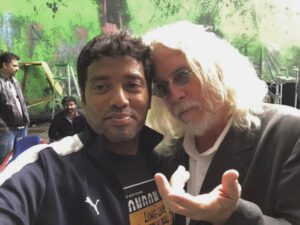
*A Legacy of Innovation and Inspiration*
Rathinavelu’s contributions to Indian cinema extend far beyond his individual projects. He has been a vocal advocate for the use of new technologies and techniques, constantly pushing the boundaries of what’s possible on screen. His talk at the BME Hyderabad was a testament to his dedication to the craft and his passion for inspiring future generations of filmmakers.
As the session concluded, the audience left not just with a wealth of technical knowledge, but also with a renewed sense of wonder and possibility. Rathinavelu’s talk was a powerful reminder that the art of filmmaking is constantly evolving, and those who dare to innovate will leave an indelible mark on the silver screen.
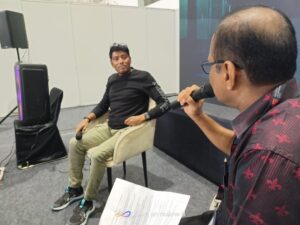
After the session concluded final hour for the day arrived.
The lights dimmed, the crowds dispersed, but the memories of the BME event lingered. SICA extends its deepest appreciation to all who made it possible, from organizers and technicians to the meticulous SICA team who packed away the remnants of a cinematic dream.
As the echoes of applause faded, SICA acknowledged the invisible hands that shaped the BME event. A special thank you to organizers, stall technicians, and the SICA team who meticulously packed away the stories told in light and shadow.
Article drafted by
CJ Rajkumar
Author/Cinematographer
